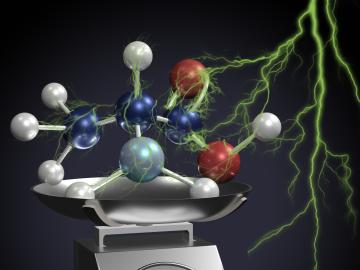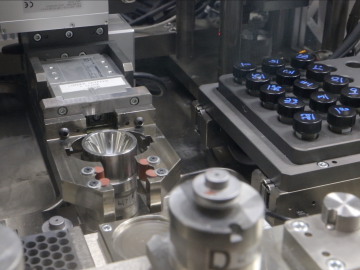
Filter News
Area of Research
- (-) Materials (67)
- (-) Neutron Science (16)
- (-) Nuclear Science and Technology (17)
- Advanced Manufacturing (22)
- Biology and Environment (29)
- Building Technologies (1)
- Computational Engineering (1)
- Computer Science (5)
- Electricity and Smart Grid (1)
- Energy Science (99)
- Functional Materials for Energy (1)
- Fusion and Fission (6)
- Fusion Energy (1)
- Isotope Development and Production (1)
- Isotopes (27)
- Materials for Computing (10)
- National Security (37)
- Quantum information Science (4)
- Sensors and Controls (1)
- Supercomputing (35)
News Topics
- (-) 3-D Printing/Advanced Manufacturing (30)
- (-) Cybersecurity (6)
- (-) Isotopes (16)
- (-) Machine Learning (7)
- (-) Microscopy (27)
- (-) Molten Salt (7)
- (-) Security (3)
- (-) Space Exploration (10)
- Advanced Reactors (14)
- Artificial Intelligence (12)
- Big Data (3)
- Bioenergy (17)
- Biology (11)
- Biomedical (21)
- Biotechnology (1)
- Buildings (5)
- Chemical Sciences (34)
- Clean Water (4)
- Composites (9)
- Computer Science (26)
- Coronavirus (14)
- Critical Materials (13)
- Energy Storage (38)
- Environment (21)
- Exascale Computing (2)
- Fossil Energy (1)
- Frontier (4)
- Fusion (16)
- Grid (5)
- High-Performance Computing (6)
- Hydropower (1)
- Irradiation (1)
- ITER (1)
- Materials (80)
- Materials Science (88)
- Mathematics (1)
- Nanotechnology (43)
- National Security (4)
- Neutron Science (129)
- Nuclear Energy (50)
- Partnerships (11)
- Physics (31)
- Polymers (18)
- Quantum Computing (4)
- Quantum Science (15)
- Simulation (1)
- Summit (6)
- Transportation (19)
Media Contacts

OAK RIDGE, Tenn., Jan. 31, 2019—A new electron microscopy technique that detects the subtle changes in the weight of proteins at the nanoscale—while keeping the sample intact—could open a new pathway for deeper, more comprehensive studies of the basic building blocks of life.

By automating the production of neptunium oxide-aluminum pellets, Oak Ridge National Laboratory scientists have eliminated a key bottleneck when producing plutonium-238 used by NASA to fuel deep space exploration.

Oak Ridge National Laboratory scientists studying fuel cells as a potential alternative to internal combustion engines used sophisticated electron microscopy to investigate the benefits of replacing high-cost platinum with a lower cost, carbon-nitrogen-manganese-based catalyst.

Scientists at the Department of Energy’s Oak Ridge National Laboratory have created a recipe for a renewable 3D printing feedstock that could spur a profitable new use for an intractable biorefinery byproduct: lignin.

Scientists from Oak Ridge National Laboratory performed a corrosion test in a neutron radiation field to support the continued development of molten salt reactors.
Physicists turned to the “doubly magic” tin isotope Sn-132, colliding it with a target at Oak Ridge National Laboratory to assess its properties as it lost a neutron to become Sn-131.

Scientists at the Department of Energy’s Oak Ridge National Laboratory used neutrons, isotopes and simulations to “see” the atomic structure of a saturated solution and found evidence supporting one of two competing hypotheses about how ions come

Experts focused on the future of nuclear technology will gather at Oak Ridge National Laboratory for the fourth annual Molten Salt Reactor Workshop on October 3–4.

An Oak Ridge National Laboratory-led team used a scanning transmission electron microscope to selectively position single atoms below a crystal’s surface for the first time.

Sergei Kalinin of the Department of Energy’s Oak Ridge National Laboratory knows that seeing something is not the same as understanding it. As director of ORNL’s Institute for Functional Imaging of Materials, he convenes experts in microscopy and computing to gain scientific insigh...


